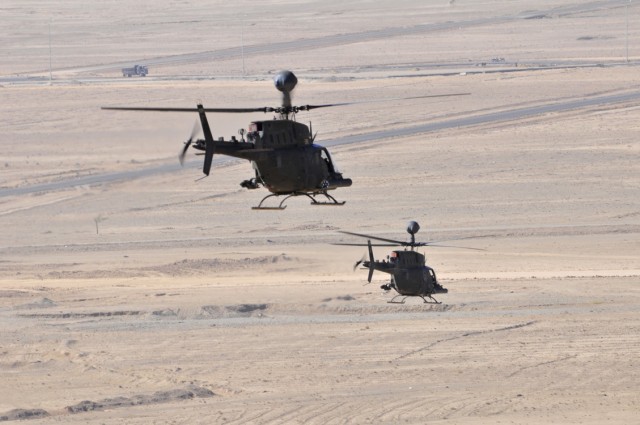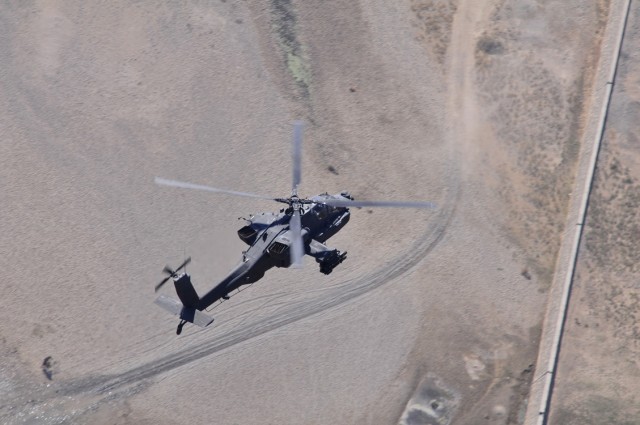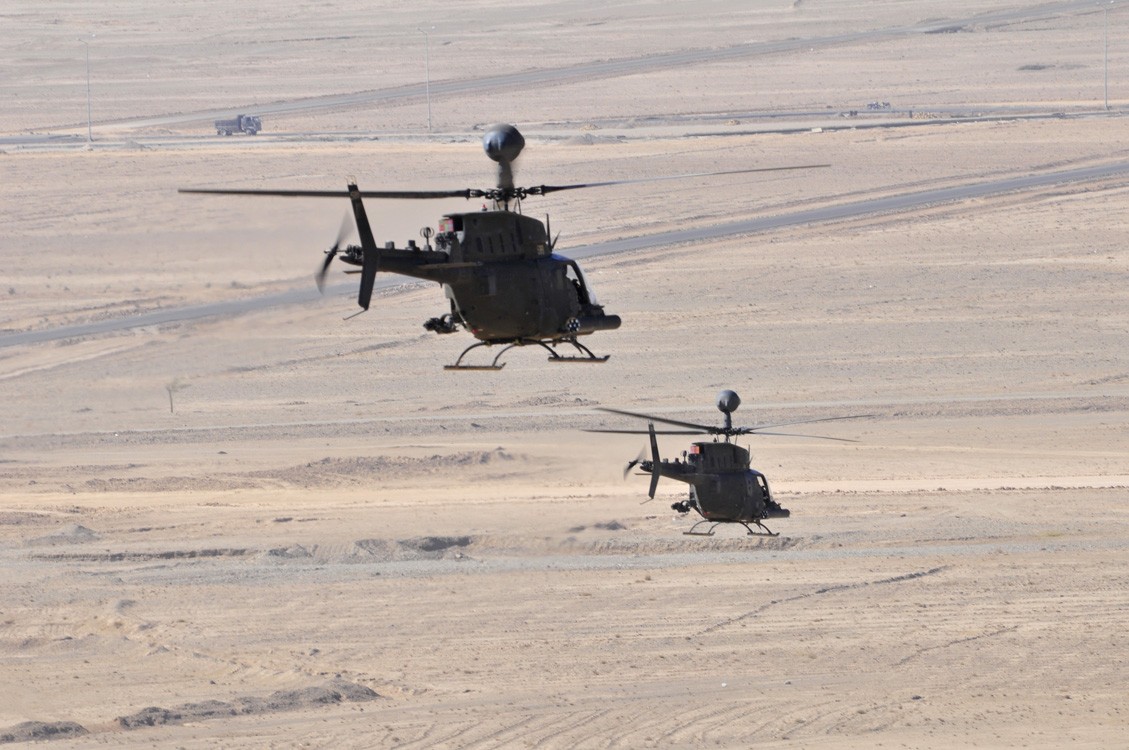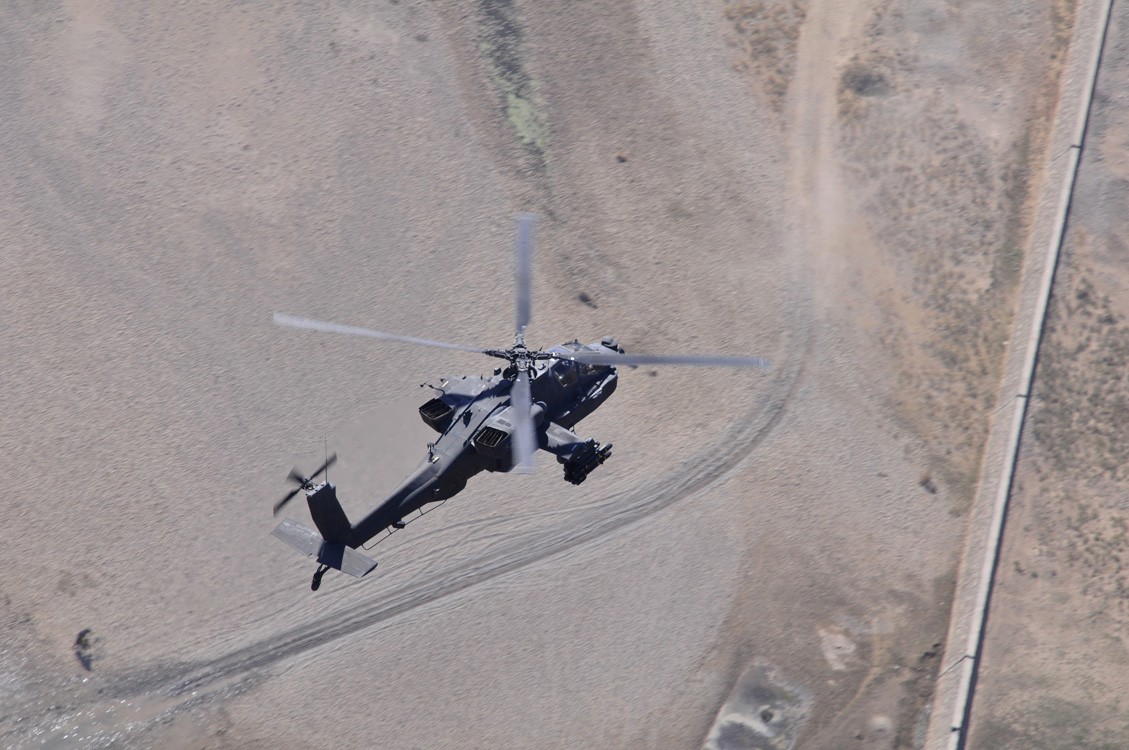Two different aircraft with separate objectives fly together to accomplish the single mission of securing southern Afghanistan, protecting coalition ground forces and Afghan civilians from insurgent activity.
The OH-58D Kiowa Warrior scout helicopter and AH-64 Apache attack helicopter pilots of Task Force Saber fly together to form heavy weapons teams, which consist of two scout and one attack helicopter, or pink teams, one and one.
Heavy weapons teams are modeled after pink teams, which were developed in Vietnam, said Chief Warrant Officer 3 Michael Akers, A Troop, TF Saber Apache pilot. It is the same concept employed today, the scout helicopter is used for search and the attack helicopter for defense.
The Kiowa Warrior is a small, agile helicopter that can maneuver with greater ease, allowing the pilot more flexibility for aerial observation. As opposed to the Apache, which is a large and highly resilient helicopter with multiple weapon delivery systems.
"They are two aircraft with totally different missions. Our airframe was built for attack, and the Kiowa was designed for reconnaissance," said Akers. "We bring a lot more to the fight as a team."
Together, these aircraft compliment and enhance the other's capabilities.
"We make a good team because of our maneuverability and firepower," said Chief Warrant Officer 3 Mark Leung, Headquarters and Headquarters Troop, TF Saber Kiowa Warrior pilot.
Heavy weapons teams have the capability to observe and devastate insurgent tactics, but they also have the effect of intimidation.
"Our presence alone will deter enemy activity," said Akers. "The ground guys feel more secure with us in the area."
Teams are in the air for hours on end providing surveillance.
They act as an aerial quick reaction force, said Akers. If troops receive enemy contact, they are already in the air responding to the situation immediately.
"We are there to support the ground troops," said Aker. "The ground force commanders are driving the train."
Commanders either request the team to provide security while conducting their operations or protect them from hostile contact.
"Our mission is to give an extra tool to the ground force commanders to support them in their counterinsurgency operations," said Leung.
Heavy weapons teams ensure the safety of the troops below, allowing them to focus on their immediate mission and follow through without any hesitation.
"We are able to provide security for the ground elements, giving them peace of mind," said Akers.
While the Kiowa searches for enemy presence, the Apache is watching from above with intense offensive firepower.
Apaches also present protection for the reconnaissance helicopters so they can do their job more freely, said Akers.
The watchful guard of the AH-64 gives the OH-58 pilot the capability to fully utilize their abilities and recon skills.
"It's a comforting feeling to know someone is watching your back," said Leung.
A unique dynamic has formed between the pilots of the two different aircraft, bringing them closer together and developing confidence.
They have found common ground because they share the same mission, said Akers.
"Flying together has built trust and camaraderie," said Leung. "We trust each other with our lives."
They must work flawlessly together in order to accomplish their mission.
While in flight, the air mission commander dictates the aircraft positions and reaction procedures. Pilots implement the commands accordingly. An AMC is the most experienced pilot on the mission.
"We have our flying techniques down," said Akers. "Once I got used to the way the Kiowas fly, it was a lot easier to keep an eye on them."
AH-64 pilots are accustomed to flying in pairs with their own airframe, which created a challenge for them to fly with OH-58s, a much smaller aircraft.
"The Apache is a large helicopter, so they are easier to keep an eye on," said Akers. "It's harder to keep eyes on the Kiowa because they are so small and low to the ground."
Though the AMC gives instruction to the pilots, they work together to complete the task while staying vigilant of each others' every move.
"The AMC must know how to employ aircraft to their maximum effectiveness," said Leung. "It's an aerial ballet."
They trained for flying heavy weapons teams at Fort Campbell, Ky. before deploying to Afghanistan.
"Predeployment training gave the pilots and air mission commanders a better understanding of how they function as a team," said Akers.
Together, the scout and attack helicopters form heavy weapons teams that fly in synergy to diminish the threat of insurgent activity in southern Afghanistan.




Social Sharing